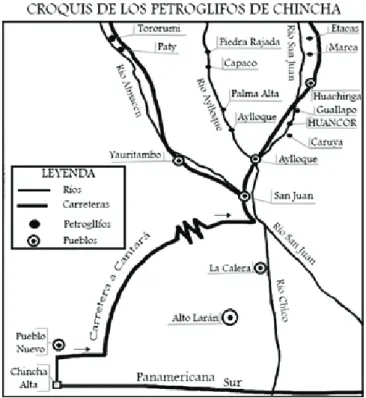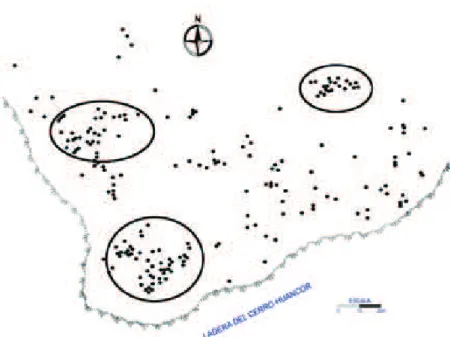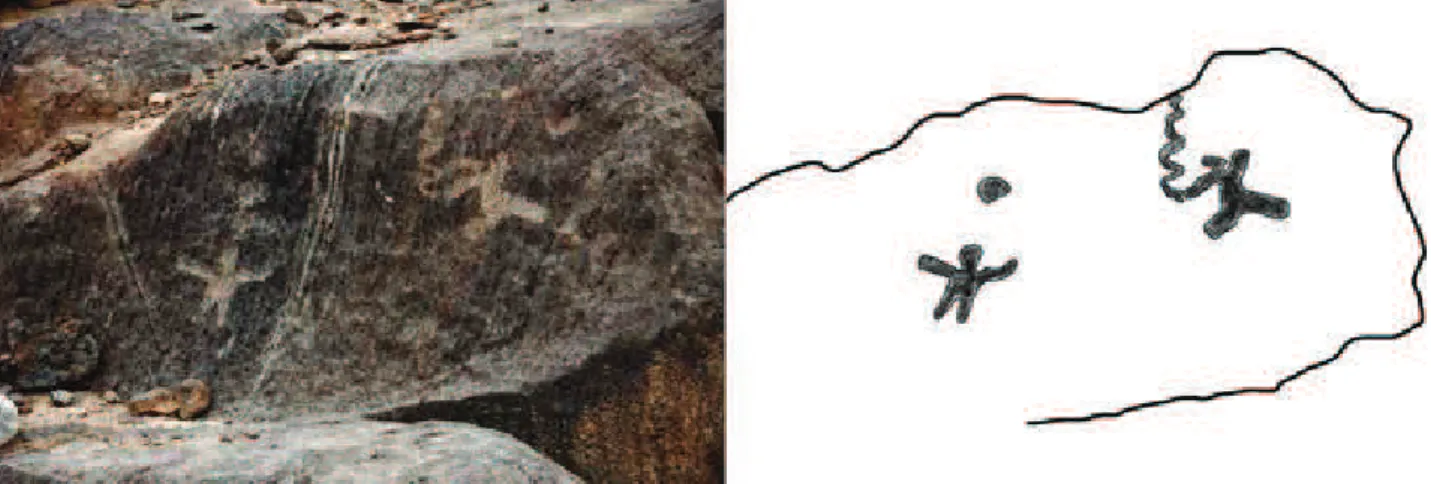Erratum
p. 18, 1st §: Instead of “A copper mine overlooks the road at c. 90 m above sea level,
[…].”
Read “A copper mine overlooks Huancor site, c. 90 m above road
level, […].”
p. 19, “The physical image, reflection of a myth”, 3rd §:
Instead of “Upright, it captures the sun at winter solstice, 21 December.”
Read “Upright, it captures the sun at summer solstice,
the Ten Priority Projects of the Yushu reconstruction agenda and was completely restored under the direct supervision of the Urban Planning and Design Research Institute of Beijing Tshinghua University. Generally speaking, during the last five years the whole Tibetan area of Yushu has undergone a deep process of reconstruction that has led to the shaping of a new Yushu city, the heart of a Tibetan eco-tourist area which sees the Gyanak Mani as one of the main tourist attractions. Accordingly, it is clear that during the last century different factors such as modernization, migrations and destructive events have strongly affected the carving culture of Sengze village and its social fabric. In particular, at the beginning of this century, local carvers began to carve by means of electrical machines that are now progressively replacing the traditional tools of hammer and chisel. At the same time, entire families have moved to Sengze, especially carvers from other Tibetan areas. Thanks to the new technology, new generations of carvers (figure 4) can work faster and on bigger stones extracted mechanically from the sacred quarry of Dosola. All these are fundamental changes that in the near future will open up new perspectives, debates and narratives regarding the mani stones carving at the
Gyanak Mani site.
Nevertheless, on the occasion of the 300th anniversary of its foundation, as a researcher and profound connoisseur of the mani stones’ carving
practice, it is my duty and honour to acknowledge the commitment of past and present inhabitants and carvers of Sengze who, through their hard work and under the guidance of the Gyanak Tokden and of his following reincarnations, have been able to develop and maintain the Gyanak Mani complex and the mani
stones’ carving tradition alive and vibrant until today.
T
HEP
ETROGLYPHS OFH
UANCOR, P
ERU: F
ORM ANDM
EANINGDavid Delnoÿ
PhD student, University of Liège, Belgium.
Marcel Otte
Professor, University of Liège, Belgium.
Landscape as morpheme
Going about 30 km up the San Juan, a Peruvian river draining into the Pacific Ocean at Chincha Alta, the site of Huancor is found on the right bank (figure 1). Here, the wet valley is joined by a dry valley. The site is situated at the foot of an emerging crest, from a rocky tongue to the first escarpments (Hostnig, 2003). A copper mine overlooks the road at c. 90 m above sea level, but its exploitation during the Hispanic period has effaced evidence of earlier use. Charcoal is also visible 30 m higher (Uhle, 1924). The engraved rocks are divided into three concentrations (figure 2), like ‘chapels’ in this forest of symbols. Huancor also includes several built structures that have been noted but never studied in detail. Their characteristics
Fig. 1. Schematic map of Chincha Alta. Sites are identified by their village structures (ݪ) or their petroglyphs (Ɣ). The valley of the San Juan River is lined with many sites, suggesting a route punctuated by stages. Provided by Martial Borzée and the Universidad Peruana del Arte Orval.
to interpretation. Shamanism involves three parts: a higher and transcendent truth, humanity and a person placed between these realities. The nature of communications between divinity and humanity remains to be established. Several of these anthropomorphic figures are included in scenes where they are associated with recognizable beings such as llamas and felines. No hunting scenes have been found at Huancor. Taken together, the creators of these images may have been agro-pastoralists.
The head-dresses of some of the anthropomorphic figures suggest maize and its growth pattern, supporting this interpretation. The pastoral aspect is seen in the representations of llamas, generally in groups, such as a herd and/or a caravan. Felines are less common. Sometimes included in scenes, they do not appear to be directly linked to the anthropomorphic figures, but are rather detached. They do not appear to reflect a disguise or metamorphosis, as some of the llama representations do, but undeniably reflect a higher reality.
This hypothesis is reinforced by a scene showing a jaguar leaping towards the sun (figure 4). Similar scenes are known in the Chavín tradition, where the figure of a jaguar is combined with a human, notably in the famous El Lanzón. A major work found in situ
in the city of Chavín de Huantar,1 this takes place in a room inside a temple (Steele, Allen, 2004). Upright, it captures the sun at winter solstice, 21 December. On this date, the sun rises in front of the stele, its rays cross the court in front of the temple and shines into the darkness where the Lanzón is found (Rick, 1997). Such application of cosmic mechanics is comparable with that observed at Newgrange in Ireland. The scene with the jaguar and the sun evokes twilight, both as death and as becoming (Eliade, 2011).
1 The city of Chavín de Huantar is located at the confluence of two rivers. Such confluence zone zones are sacred to Andean populations and are called tinkuy (Steel and Allen,
2004).
would suggest, however, a funerary context and the structures indicate different construction phases. We mention them here for information purposes only, but more in-depth interpretation would require a specific mission, programmed as part of the overall study of the site. Considered in a broader view, Huancor seems to be a stage in the trajectory of the San Juan River (figure 1). The study of Huancor currently in progress is thus being undertaken at two scales of analysis: at the site level and as part of a larger system.
The physical image, reflection of a myth
Five principal types of engraved signs can be defined: anthropomorphic figures, zoomorphic figures, punctuations, circles, crosses and ‘diverse’ (Delnoÿ, Otte, 2015). The first is typically composed of upright personages, facing forward, whose attributes or details appear to indicate shamans (Eliade, 1978). Also included are some quadrupedal anthropomorphic representations, seen as costumes or disguises. Some of these suggest a circular dance. A smaller number of images shows humans in profile and movement (figure 3). This first group suggests shamanism. The personages stare directly at the spectators while addressing a higher truth. These are complex rites, for which the representations at Huancor inadequately capture the deeper meaning in the absence of a key
Fig. 2. Drawing of different engraved rocks at Huancor. The escarpment on the edge of the valley is indicated by oblique lines and the engraved rocks by dots. These appear to form three concentration zones that may have been joined by paths that are barely visible and forgotten today.Provided by Martial Borzée and the Universidad Peruana del Arte Orval.
symmetrical curves.
Of these figured representations, we emphasize the mediating nature, via the shaman, between the spectator and a higher world. In this view, the groups of llamas form part of sources of prosperity and security through the absence of predators. Birds are mediators between earth and sky, as observed in many cultures, from representations at Çatal Höyük (Turkey) to the Christian Holy Spirit, to the Greek harpies. The condor here is emblematic, both representative of a divine entity and of a sacred animal. Geometric figures seem to suggest a link with celestial elements, such as the planet Venus.
Punctuated components correspond to filled or empty circles 1–2 cm in diameter. At Huancor, their association forms lines for which the separator character is used: animals, complements to other images and geometric figures. The diverse category includes complex elements such as cells with an interior Among the zoomorphic representations, llamas and
felines are complemented by birds and serpents. Llamas are most often in groups. However, one representation shows an isolated llama. Of large size and composed of dots, only the head is made with a continuous line. This image is like one of a feline, also at Huancor, and the two images can be interpreted as reflections of transcendent realities. Felines seem most often to be associated with myths. Isolated, they evoke a certain detachment faced with a human reality. In the zoomorphic type, birds form the most varied group and include chicks and adults, coastal species and the condor, which indicates inland regions. Birds can appear alone or associated with geometric motifs, for example stars and circles. No punctuated representation is known. However, some images have a stippled fill. The condor indicates the sun by the position of its wings. Finally, serpents are standardized and have a triangular head and undulating body in
Fig. 3. Photo and drawing of an engraved rock. Two personages are separated by a whiteish quartzitic band. The upper edge of the engraved side is bevelled. A serpent undulates towards one of the personages in movement. The second extends the arms and seems to evoke an attitude of dancing or flight.Photo by the Universidad Peruana de Arte Orval. (Drawings by David Delnoÿ).
Fig. 4. Photo and drawing of an engraved rock. A feline comes out of the rocky angle at twilight. The shadows take away the day’s sunlight. A mythical battle, this scene recalls cyclic time and the rebirth confirmed by the rising of the sun.Photo by the Universidad Peruana de Arte Orval. (Drawings by David Delnoÿ).
decoration and elements based on spiral movement. Huancor seems to be a place of encounter between realities, and furthermore, it is a real cosmic evocation. As part of a series of sites along the course of the San Juan, Huancor offers an interpretive window on to a millenary mythology.
A path for communication between humanity and divinities, these images are above all the means to embody this connection. Destined for both gods and humans, they participate in the dialogue between realities. We witness here an interface where the real and dreamed are associated. We cannot understand it as the prerogative of one of these realities; does the threshold belong more to the door or to the one entering? Each of these components is linked to the others. Conscious of this interdependence, humans begin the dialogue with a higher reality and preserve this balance.
References
Delnoÿ, D.; Otte, M.
2015 Huancor: oubli et déclin d’un site d’art péruvien, Archéologia, pp. 14-15.
Eliade, M.
1978 Le Chamanisme et les techniques archaïques de l’extase, Paris (Payot).
2011 Aspects du mythe, Paris (Folio essais), pp.
56-73.
Hostnig, R.
2003 Arte Rupestre del Perú. Inventario Nacional,
Lima (Editorial e Imprenta de la UNMSM), pp. 171-172.
Otte, M.; Delnoÿ D.
2015 Pétroglyphes de Huancor, Pérou, International Newsletter on Rock Art, 71, February 2015, pp. 25-29.
Rick, J.
1997 Exploring Chavín de Huántar, Stanford
University, at http://web.stanford.edu/~johnrick/ chavin_wrap/chavin/index.html, (accessed 5 February 2015).
Steele, P.R.; Allen C.J.
2004 Handbook of Inca Mythology, Santa Barbara
(ABC-CLIO), pp. 130-132. Uhle, M.
1924 Explorations at Chincha, in Kroeber, A.L.
(ed.), University of California Publications in American Archaeology and Ethnology, 21, 2, pp. 91-92.
Gö
BEKLIT
EPE,
BETWEENROCKARTANDART Edmond FurterArchaeological Society of South Africa, Johannesburg, South Africa.
Reliefs of figures on Göbekli Tepe pillar D43, are spaced in a universally standard peripheral sequence according to some of their typological attributes, and with their eyes on a standard axial grid. The same archetypal structure is expressed in all art worldwide, including painted San figures in South Africa. The gulf of time and space between the two works and cultures demonstrated in this article, confirms that the core content, ‘syntax’, and ‘grammar’ of art are universal. All artists and cultures express archetypal structure subconsciously, while on a conscious level we appropriate archetypes only by styling.
Where and when
Göbekli Tepe formal reliefs are emblematic of a transition to Neolithic in Mid-eastern Turkey, near Sanliurfa and Harran, involving advanced hunting (ropes and nets), prestige agriculture (ovis, bos, and buccrania pendants), and mixed economy (textiles and obsidian trade). Dating of pillar 43 in enclosure D, is within a succession of recycled structures from BC 9500 to 8000, in the Younger Dryas thaw. To my mind the age, position, structures, and styling of Göbekli Tepe offer a ‘bridge’ between Pre-Pottery Neolithic, and Bronze Age cultures. It may be contemporary with a vegetative theme era in Tanzanian rock art, at the transition to the Holocene, BC 12 000 to 8000 (Anati, 2004). The emphasis on reeds, perhaps grain, and abundant life in some Göbekli art, could be seen in the context of ecological recovery.
Before Göbekli, relief art occurs at some primary Ice Age resurgence sites, typically near mountains, such as Tuc d’Audobert, Gorge d’Enfer, Roc-de-Sers, Bedeilhac, and some North African sites. The Ice Age thaw from About BC 13 000 allowed a Magdalenian or Swiderian revival in Europe by 11 000, but about 10 900 an asteroid impact, eruption, or both, seems to have caused an icefall, glaciers covering plains, and floods (Collins, 2014). About 10 500 a Swiderian; culture again resurges; Hallan Cemi followed in


